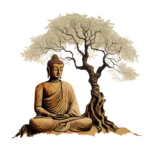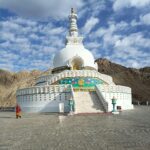History of Folk Dance in Bihar
Bihar, a land steeped in cultural and historical significance, boasts a rich tradition of folk dances that reflect the vibrant social and spiritual life of its people. These dances are more than mere performances; they are deeply intertwined with the state’s festivals, rituals, and daily life. Each dance form narrates stories of joy, devotion, love, and the rhythms of rural life.
Origins and Cultural Significance
The folk dances of Bihar have their roots in the region’s ancient traditions. These dances evolved as expressions of collective emotions, celebrations of nature, and tributes to deities. Performed during agricultural cycles, festivals, marriages, and religious ceremonies, these dances serve as both entertainment and a means of preserving cultural heritage.
The dances often accompany folk songs, which are sung in regional dialects such as Maithili, Bhojpuri, and Magahi. The music and movements are simplistic yet profound, resonating with the themes of community, spirituality, and celebration.
Prominent Folk Dances of Bihar
- Jhijhiya:
- Jhijhiya is a traditional dance performed by women during the Navratri festival to appease the goddess Durga. Women dance with perforated earthen pots, containing oil lamps, balanced on their heads. The dance symbolizes devotion and invokes blessings for prosperity and protection.
- Jhumar:
- Jhumar is a lively dance performed during harvest seasons and festive occasions. Both men and women participate, celebrating the joy of a bountiful harvest. The rhythmic movements and melodious songs reflect the agrarian lifestyle and communal harmony.
- Kajri:
- Kajri is a monsoon dance associated with the longing for rain. Women sing and dance in groups, often under mango trees, expressing their emotions through graceful movements and soulful tunes. The dance is popular in rural areas of Bhojpuri-speaking regions.
- Chhau Dance:
- Though primarily associated with neighboring Jharkhand and Odisha, the Chhau dance also has a presence in Bihar, particularly in tribal communities. Known for its dramatic masks and martial movements, Chhau combines storytelling with physical expression, depicting episodes from mythology.
- Paika Dance:
- A traditional martial dance, Paika was historically performed by warriors before going to battle. It involves vigorous movements, simulated combat techniques, and the use of swords or sticks. Today, it is performed during festivals and cultural events as a tribute to Bihar’s martial heritage.
- Bidesia:
- Bidesia is a theatrical folk dance-drama form that originated in the Bhojpuri region. Created by Bhikhari Thakur, it highlights social issues such as migration, family separation, and caste discrimination. The dance is characterized by expressive gestures and poignant storytelling.
- Nardi:
- It is a Kirtaniya dance. Traditional instruments like mridanga and jhal are used in this. Kirtankars perform different types of slogans during this dance.
- Gangiya:
- Pavani Ganga is not only a river but also the mother of Indian culture. Ganga is one of the major rivers of Bihar. It is believed that by bathing with its holy water, a person is freed from all his sins. Ganga Stuti is performed by women through dance which is called Gangiya dance.
- Bolbai:
- This dance is associated with the context of the husbands going abroad. It is prevalent in Anga Pradesh (Bhagalpur) and its surrounding areas.
- Sama-Chakewa:
- This dance is an important dance of Mithilanchal in Bihar. In this, women plead for the protection of their brothers. It is a tradition to do it in the month of Kartik.
- Ghanto:
- The tradition of Bharat is ‘Atithi Devo Bhava’. But when there is nothing to eat in the house, the arrival of a guest is a matter of sorrow. Through this dance, the poor sister living in the in-laws’ house becomes very happy when she gets information about the arrival of the brother, but the lack of food makes her upset. In the anxiety of hospitality, a song of separation is sung and a restless dance is also performed.
- Irni-Birni:
- It is a major dance of the folkdance Angika. The theme of this dance is the estrangement between husband and wife.
- Jharni:
- It is a type of dance and song sung by Muslims on the occasion of Muharram.
- Deohar:
- There is a very ancient song and dance representing the gods and goddesses. It is prevalent in Bihar and Jharkhand. In some places, this dance is also known as Bhagta Naach.
- Domkach:
- It is a popular dance drama performed by women in a group on the occasion of marriage. When the procession has left for the wedding at the bride’s house and only women are left at home, a dance drama is performed by women dressed as men.
- Bagulo:
- It is one of the most popular folk dances of North Bihar. In this, a very vivid depiction of a woman going from her in-laws’ house to another woman is very vivid.
- Jogira dance:
- A dance performed by men masquerading as women on the occasion of Holi.
- Hori:
- The song and dance sung on the arrival of spring is at its peak on the day of Holi.
- Natua dance:
- In Mithila, the dance of women by men is called Natua dance.
- Launda dance:
- It is a special type of dance in which men dance by masquerading as women. It has an ancient tradition in Bihar.
- Godni:
- In this folk dance, fish sellers and customers are shown.
- Gho-Gho Rani:
- A small children’s game, which is called Gho-Gho Rani in folk style. In this dance, a girl lives in the middle and girls from all sides form a circle and sing songs and roam.
- Dhankatni:
- After the harvest, the farmer sings and dances while celebrating the family. Which is known as Dhan Katni dance.
- Jat-Jatin:
- A particular caste is the song and dance performed by Jats and their wife Jatin. It is usually performed during the yearly season to celebrate Lord Indra.
- Manjhi dance:
- The song is sung in a dancing posture by boatmen in the rivers.
- Pawadiya dance:
- The congratulatory songs and dances performed by the eunuchs on the birth of a child are called Pavadia dances.
- Jhamta:
- The folk dance of the Tharus, the only tribal community living in West Champaran in Bihar, is a cultural heritage in itself.
- Vidyapat:
- In Mithila, the dance performance of the songs of Maithil Kokil Vidyapati is called Vidyapat.
Themes and Symbolism
The folk dances of Bihar often revolve around themes of nature, devotion, love, and social narratives. They symbolize the resilience, creativity, and collective spirit of the people. Dancers use simple yet meaningful props, such as clay pots, sticks, and lamps, to enhance the storytelling.
Costumes and ornaments play a vital role in these performances, with vibrant attire reflecting the cultural ethos of the region. Men and women often wear traditional clothing such as dhotis, sarees, and turbans, adorned with jewelry and floral decorations.
Evolution and Contemporary Relevance
Over time, Bihar’s folk dances have undergone transformations to adapt to changing contexts. While traditional settings like village gatherings and festivals remain prevalent, these dances are now performed on stage at cultural festivals and national events. They have gained recognition as a vital part of India’s intangible cultural heritage.
Government initiatives, NGOs, and cultural organizations have been instrumental in preserving and promoting these art forms. Workshops, competitions, and digital platforms have provided a new lease of life to these traditional dances, attracting younger generations and global audiences.
Conclusion
The folk dances of Bihar are a testament to the state’s rich cultural legacy. From the devotional Jhijhiya to the theatrical Bidesia, these dances encapsulate the essence of Bihar’s traditions and values. As they continue to evolve and find new expressions, these dances serve as a bridge between the past and the present, celebrating the timeless spirit of Bihar’s cultural heritage.



